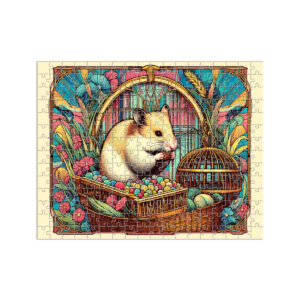
Explore & Play
Discover interesting topics and solve the accompanying crossword puzzle.
Child Crossword | Key Stages of Child Growth
Table of Contents
To get the most out of this blog post, you have the option to start with the Child crossword and challenge yourself with the terms related to childhood development. If you’re not very familiar with the topic, feel free to read through the article first to gain some background knowledge, and then return to the crossword to test your understanding. Enjoy both parts for a more complete experience!
Child Crossword
You can either fill in the crossword puzzle directly on this page or click the button in the bottom right corner to print it for free.

The Stages of Child Development: From Infant to Teenager
Introduction: Understanding the Journey of Child Development
From the moment a child is born, their development is a fascinating journey that evolves through distinct stages—from infancy to adolescence—shaped by both nature and nurture. As each stage passes, children grow physically, emotionally, and cognitively. In this article, we will explore these stages, highlighting key milestones, the roles of family members, and how early experiences impact a child’s future. Along the way, we’ll incorporate a crossword puzzle to help reinforce the terms associated with child development—giving you a fun, interactive way to absorb the information!
1. The Newborn Stage: From Birth to the First Year
The Early Days of Life
The newborn phase marks the first and most delicate stage of a child’s life, with every touch, sound, and interaction influencing their early development. During the first few months, a baby’s physical needs are paramount. They rely heavily on their mother and father for comfort, nourishment, and safety. Essential items such as diapers, pacifiers, and blankets are critical for providing the comfort and security a newborn requires.
A baby’s first few days are spent primarily in the crib, learning to adjust to the outside world. This period is one of deep bonding between the baby and their parents. The presence of a pacifier can also help soothe and calm a crying infant, and a blanket offers a sense of warmth and familiarity.
Development Milestones
As the months pass, babies begin to show signs of early development. One of the most exciting milestones is when babies begin interacting with their environment. The toybox becomes an essential part of their world, offering them colorful objects to explore and manipulate. These simple toys help with the development of motor skills, encouraging babies to reach, grasp, and play.
During these early months, babies also begin to develop a sense of trust and attachment to their primary caregivers. This is a time when playmates, whether family members or peers, begin to shape the child’s early social experiences.
The First Signs of Interaction and Socialization
Even as a newborn, babies show a preference for interaction. Whether it’s staring at a toy, listening to soft lullabies, or engaging in cooing exchanges, babies’ ability to connect with their caregivers starts from day one. Simple toys like crayons or soft, colorful objects are introduced at this stage to stimulate sensory development and promote engagement.
2. The Toddler Years: Walking, Talking, and Exploring the World
Physical Growth and Motor Skills
As babies grow into toddlers, they begin to explore the world around them, gaining independence and developing crucial motor and social skills. The toddler stage is filled with rapid growth, as children begin walking and moving with more purpose. Strollers are commonly used during outings, helping parents keep toddlers safe and comfortable as they explore their surroundings.
At this stage, toddlers begin to engage in more interactive play, often drawing from their toybox and enjoying various activities like building blocks or stacking toys.
Language Development and Communication
One of the major milestones of the toddler years is the beginning of verbal communication. While their vocabulary may be limited, toddlers begin to express themselves through simple words and phrases. Holding a crayon for the first time or mimicking adults as they draw shapes or scribbles is a significant developmental step. These small creative expressions aid in both language and motor skill development.
Socialization and Early Relationships
Toddlers are learning how to interact with others, and much of this comes through play. While they might not yet understand the concept of friendship in the way older children do, they begin to form relationships with their siblings and playmates. Playdates become an essential part of the toddler’s social life, offering opportunities for them to practice sharing, turn-taking, and other important social behaviors.
3. The Preschool Stage: Preparing for School and Socializing More
Cognitive and Emotional Development
The preschool years are an exciting time when children are ready to engage in structured learning and enhance their social skills. At this stage, preschoolers begin to show a deeper understanding of the world around them, grasping basic concepts such as shapes, colors, and numbers. Kindergartners enter the formal education system and start learning to write their name, follow instructions, and work in groups.
While educational milestones are critical, emotional development during this stage is equally important. Children become more confident in their abilities and start expressing their emotions more clearly. They often feel proud when they learn new things, whether it’s completing a study project or successfully solving a simple puzzle.
Social Skills and Friendships
By the time children reach the preschool years, they are becoming much more adept at forming friendships. The concept of a playmate expands beyond family members, as children begin to engage in more complex social interactions with classmates and peers. Role-playing with costumes or engaging in group games is how preschoolers learn to cooperate with others, enhancing their social intelligence.
The Transition to Formal Education
As children enter kindergarten, the transition from home to school life can be both exciting and challenging. Pupils learn to navigate structured environments, making the transition from play-based learning to more formal instruction. Parents and caregivers play an essential role in helping children adapt to the social and academic expectations of school life.
4. The Elementary School Years: Expanding Knowledge and Gaining Independence
Academic Growth and Learning Skills
As children move into elementary school, their learning and personal development accelerate. Study sessions become more frequent, and pupils are exposed to more complex subjects such as mathematics, science, and reading. Teachers work with students to build foundational academic skills that will serve as a foundation for later learning.
At this stage, children begin to develop specific interests. Whether it’s in arts, sports, or academics, children gain confidence in their abilities, and schoolwork becomes more focused on their areas of strength. The growing sense of independence leads to more self-sufficiency in completing homework and projects.
Social Development and Peer Relationships
As children make new friends and engage in more diverse social activities, their relationships with siblings and playmates continue to evolve. Toy preferences may shift to more collaborative activities, such as team sports, building projects, or games that require communication and cooperation.
During these years, the dynamics of friendships become more complex, and children begin to navigate the challenges of social acceptance and peer influence. These interactions teach valuable lessons about empathy, leadership, and conflict resolution.
The Importance of Play
Even though academic demands increase, play remains a crucial part of childhood. Whether through creative activities like drawing with crayons, playing with a toy, or attending a playdate, these moments of leisure help children build problem-solving skills and enhance their creativity. Play continues to be an essential form of learning, enabling children to explore new ideas and practice social skills.
5. The Adolescent Stage: Navigating the Teenage Years
Physical and Emotional Changes
Adolescence marks a critical period in a child’s life, full of emotional and physical changes as they transition from childhood to adulthood. Teenagers experience rapid physical growth, often feeling awkward as their bodies change. At the same time, their emotions can be intense as they navigate the challenges of identity and self-esteem.
As a juvenile, their social lives also shift dramatically. Friendships become more important, and romantic relationships may begin to form. These experiences shape how they view themselves and the world around them.
Educational Milestones and School Challenges
Teenagers face increasing academic pressure as they move through high school. Study sessions become longer and more intense, as they prepare for exams and work toward graduation. These years are critical in shaping their future educational and career paths. However, the pressures of schoolwork can sometimes feel overwhelming.
The Role of Parents in the Teenage Years
As teenagers gain independence, their relationship with their father and mother changes. They may seek more autonomy but still rely on their parents for emotional and financial support. Understanding the evolving needs of a son or daughter is essential for parents to provide the right balance of guidance and freedom.
6. The Role of Family and Siblings in Shaping a Child’s Development
The Parent-Child Relationship
A child’s family plays an essential role in shaping their emotional and social development. From infancy through adolescence, father, mother, son, and daughter all contribute to the family dynamic. A secure and supportive home environment provides the foundation for healthy emotional growth and academic success.
Sibling Dynamics and Early Socialization
The role of siblings in a child’s life cannot be underestimated. From the first moments of shared play in the toybox to navigating the ups and downs of adolescence, sibling relationships offer opportunities for children to learn about empathy, negotiation, and conflict resolution. These early relationships often provide the first experience of long-term friendships and influence later social interactions.
7. Childhood and Beyond: The Lifelong Impact of Early Development
The Long-Term Effects of Early Childhood Education
The experiences children have during their formative years—infancy through adolescence—lay the foundation for their future success, both personally and academically. Research consistently shows that the quality of early study experiences, along with the presence of loving and supportive family members, significantly influences a child’s overall development.
The Influence of Family and Play on Lifelong Skills
Family relationships and playtime experiences leave an enduring mark on children’s lives. For instance, the early use of tools like a crayon to express creativity or engaging with a favorite toy builds cognitive and emotional skills. Play also fosters resilience, problem-solving abilities, and a sense of joy that children carry into adulthood. Similarly, the support of parents, siblings, and close playmates helps children develop a sense of belonging and confidence, enabling them to navigate future challenges effectively.
Conclusion: The Endless Journey of Growing Up
Childhood is a unique and transformative period that sets the stage for every aspect of adult life. From the earliest cries in the crib to the bustling days of school, the journey of growing up is a blend of exploration, relationships, and learning. Each stage introduces new milestones, challenges, and joys that contribute to a child’s development into a confident and capable individual.
Whether it’s drawing with crayons, sharing a laugh with siblings, or building friendships during a playdate, the small moments shape the big picture of who we become. As we continue to reflect on the stages of childhood and the critical role of family, let us also appreciate the beauty and complexity of this formative journey.
A Fun Way to Learn More About Childhood
Now that you’ve explored the fascinating stages of childhood development, why not test your knowledge with our engaging Child crossword puzzle? Dive in, solve the clues, and deepen your understanding of the words and concepts discussed in this article!
Share to...
I hope you enjoy the content.
Want to receive our daily crossword puzzle or article? Subscribe!
You may also be interested in
Share to…
Want to receive our daily crossword puzzle?
-
Jigsaw Puzzles
Zodiac Watercolor Rooster Puzzle: Artful Elegance 250 | 300 | 500 Pieces
kr 348,00 – kr 439,00Price range: kr 348,00 through kr 439,00 Select options This product has multiple variants. The options may be chosen on the product page -
Jigsaw Puzzles
Art Nouveau Puzzle – White Rabbit in a Whimsical Garden 250 | 300 | 500 Pieces
kr 348,00 – kr 439,00Price range: kr 348,00 through kr 439,00 Select options This product has multiple variants. The options may be chosen on the product page -
Jigsaw Puzzles
Charming Hamster Art Nouveau Jigsaw Puzzle 250 | 300 | 500 Pieces
kr 348,00 – kr 439,00Price range: kr 348,00 through kr 439,00 Select options This product has multiple variants. The options may be chosen on the product page

















